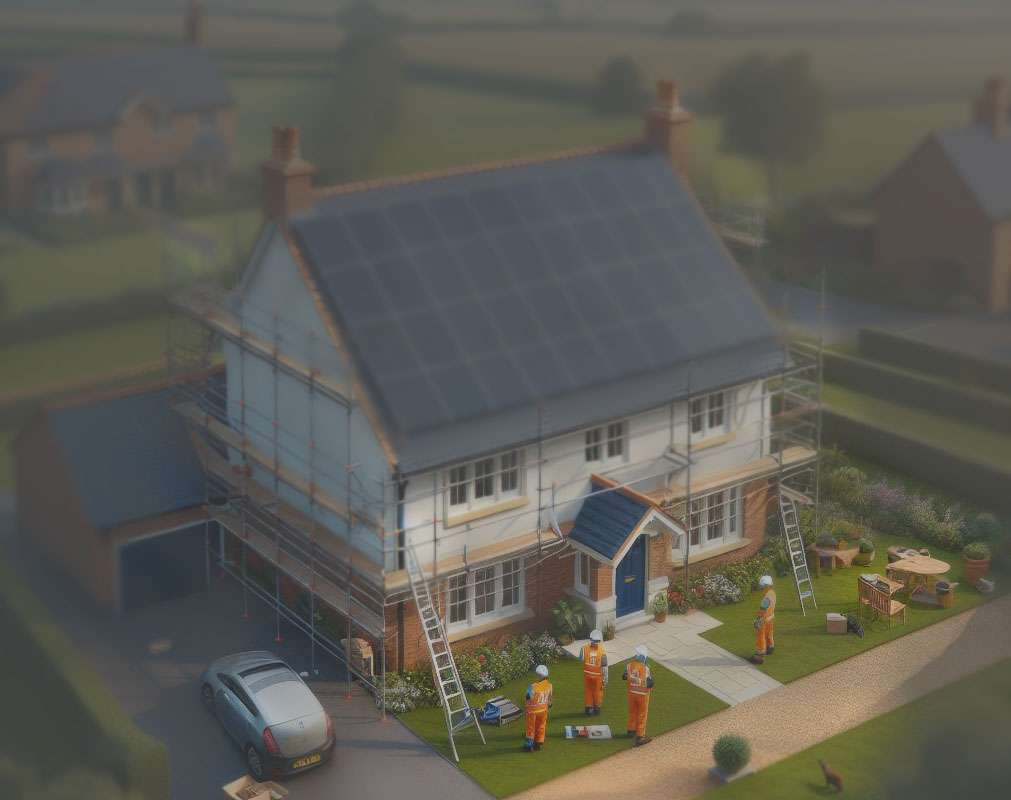The Feed-in Tariff (FIT) scheme for new applications closed in March 2019, but if you already have a solar panel system registered under FIT, you’ll continue receiving payments as usual. However, making certain changes to your system can impact your FIT eligibility. Here’s what you can and can’t do:
Maintained FIT Eligibility:
- General Maintenance: Routine maintenance such as cleaning panels, replacing damaged wiring, or inverter repairs will not affect your FIT payments.
- Minor Upgrades: Small upgrades that don’t increase your system’s capacity (e.g., adding monitoring equipment) are generally okay; as well as like for like replacement.
Potentially Voided FIT Eligibility:
- System Expansion: Increasing your solar panel capacity beyond the originally registered amount can void FIT payments for the entire system.
- Change of Use: If you stop using the system for electricity generation and divert the power entirely for other purposes (e.g., pool heating), FIT payments might cease.
- Meter Tampering: Altering your meter readings or tampering with the grid connection can lead to disqualification and potential penalties.
Recommendations:
- Contact your FIT provider: Before making any modifications, consult your FIT provider (usually your electricity supplier) to confirm if it affects your FIT eligibility.
Solar panel upgrades and “splitting” solar.
You can install replacement panels provided that they works with your existing inverter. Typically people may want to change the panels to newer more effective panels. This would normally reduce the number of panels, freeing up space for more panels and a secondary system.
Keeping the Fit system the same in terms of power will not effect anything.
Change the inverter
With FIT you can only have a inverter with the same output power, this focuses on the output, so a hybrid could be fitted. If you split the array space, then you could have a AC coupled inverter. This would charge a battery and provide power when the suns gone down in the evenings.
Add an inverter.
You can add a secondary system separate to the FIT with your Fit largely being exactly the same.
Retrofit an inverter ( AC Coupled) allows you to add a secondary inverter with a battery that allows battery storage.

Would putting new panels in help?
Depending on what your doing and want to achieve.
Older systems with typically 120w to 250w solar panels installed, are likely to see more power from new panels. You would have lost around 10% performance over the years and new panels are more powerful and efficient; they also cost less. This will allow you to “Max out” the system inverter you already have with fewer panels.
If you are adding a system for your self or for a battery, then you will need to free up space With new panels. You could double the power for the same amount of space..
You may want to add a DC coupled inverter, this would be one with a battery and connects to solar. By replacing the panels, you can maintain the original power output to the fit inverter and also supply power to the new inverter.
100% Export.
If you split your system and it has 100% export, you should contact the FIT provider and ask for adjustment. FIT now has a different metering system, the original would pay for all production, then assumed you use 80% so you were paid 20%.
It does depend on when and where you had your FIT agreement, it is fairly often that you would get 50%. therefore you could double the fit payments.
If you split the system with your own solar and have the FIT just export. You could contact the provider for the payment adjustment as effectively you would not be being paid fairly.
Moving away from FIT
Fit payments on older installations have a good value, however you may find that the production and charges you have no longer work and you want to reduce or have no bill at all.
Export payments vary, but between £0.04 and £0.15 is average these days.
Peak rates and standard rate power on systems without a battery can result in a bill simply because you power use is in the evening and not at the times when you system is making power, You will have to work out if having a battery will work for you and save you money.
Storage values:
5.1kWh Battery (budget) – £1.22
11.7kWh battery (budget) – £2.82
15Kwh Battery – £3.76
40kWh battery – £9.60
Grid charge costs and savings per cycle – ROI – Annual saving:
5.1 £0.20 (£1.02) – ROI 1.54 years – Annual £372
11.7 £0.46 (£2.36) – ROI 0.89 years – Annual £861
15 £0.60 (£3.16) – ROI 1.45 years – Annual £1,153
40 £1.60 (£6.44) – ROI 3.1 years – Annual £2,350
Do remember the figures about are only the battery storage, a system change, such as a suitable inverter will add to costs and break even points will change.
10 Panel example.
If you have ten solar panels, you will be making 2.5kw peak power.
If you upgrade to new panels, you would be making 4.35kw peak power, the cost here is around £700.
Adding inverter example.
Adding a 3.6kw hybrid inverter and battery, the hybrid inverter cost is around £780. The battery we will say £750 and that is the 11.7kwh example above.

No responses yet